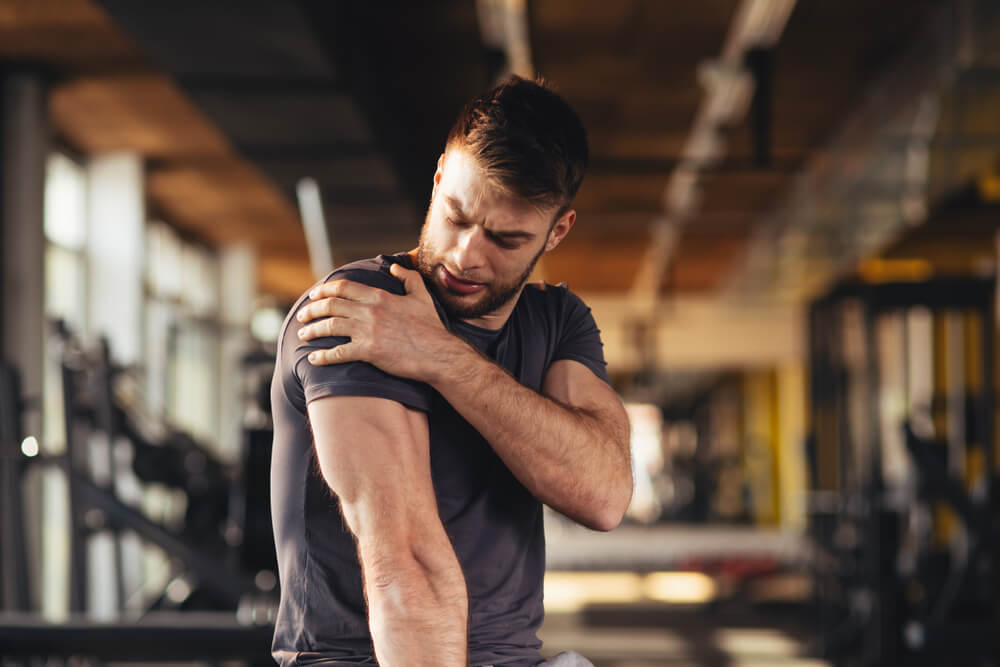Rotator cuff injuries can have a significant impact on your life. With persistent shoulder pain and other symptoms, finding the right path to relief and recovery is essential. Besides pain, common symptoms of a rotator cuff injury include aches and limited mobility in the shoulder. The intensity of your symptoms can vary depending on your physical condition. If you are looking for ways to manage your rotator cuff injury, physical therapy can be an excellent option. A licensed physical therapist can help evaluate your recovery timeline and make adjustments to reach an optimal outcome. The techniques used in your rotator cuff physical therapy may change depending on your condition and priorities. However, the following treatments tend to be fundamental parts of any rotator cuff treatment plan.
Top physical therapy techniques for rotator cuff injuries
- Strengthening exercises — Tearing the rotator cuff can have a major negative impact on your strength. The rotator cuff muscles play an important role in lifting at the shoulder. After a severe rotator cuff injury, your shoulder may be too weak to even raise your hand. In addition, the muscles around the rotator cuff can deteriorate due to lack of use. To regain your strength, you can engage in physical therapy exercises focused on your rotator cuff. Exercises like shoulder rotation with a resistance band are often incorporated. By building back your strength, you can return to having a functional shoulder.
- Stretching — Building strength is not the only important goal of rotator cuff physical therapy exercises. Another important aspect is increasing your range of motion. With the right stretches, you can improve your shoulder flexibility. Your physical therapist may guide you through gentle exercises like pendulum swings. When dealing with a damaged rotator cuff, avoiding certain exercises is important. Some exercises can be counterproductive, inflicting more pain on your injured shoulder. Your physical therapist can help you learn which exercises are harmful and which ones are helpful.
- Joint mobilization — Manual therapy helps activate the shoulder and relieves muscle tension. A licensed physical therapist can apply a range of hands-on techniques to address a rotator cuff injury. Among these, one of the most effective is called joint mobilization. Joint mobilization is a painless technique that can help loosen up a restricted joint. This can restore functionality in your shoulder and alleviate tension. Manual therapy also promotes better circulation. Improved circulation and blood flow means the tissue in your body can have more access to the nutrients it needs. By improving your circulation, you can speed up your body’s natural healing processes.
- Dry needling — Want a fast-acting solution to your rotator cuff pain? A physical therapy technique called dry needling could be exactly what you are looking for. Dry needling involves the insertion of sterile needles into specific points on the body. The needles are empty. Instead of working as a medication delivery system, the dry needles themselves do the work. Your physical therapist can use dry needling to alleviate tension and trigger healing in areas of your body affected by your condition. Dry needling works especially well when combined with other physical therapy techniques. An integrated, holistic approach to physical therapy can combine a range of methods to yield the best results.
- Hot and cold therapy — Hot and cold therapy is a technique you can use between visits. Because it can be applied at home, hot and cold therapy is a convenient way to maintain your treatment progress outside of the clinic. This approach uses temperature changes to decrease inflammation and promote circulation. You can use something hot (a heat pad, for example) to increase your blood flow and encourage relaxation. Cold therapy, on the other hand, is typically used to numb pain and reduce inflammation. Your physical therapist may be able to provide some guidance on how to use hot and cold therapy at home.
- Activity modifications — Certain habits can slow down or prevent recovery from a rotator cuff injury. With physical therapy, you can learn how to make healthy choices in each aspect of your life. Modifying your activities is a great way to passively boost your recovery. Your physical therapist may advise you on safe shoulder motions to help prevent re-injury. Other modifications can include changes to your diet and exercise habits. By working with a physical therapist, you can improve your overall physical health for the long term.
SSOR offers effective rotator cuff physical therapy
SSOR (Specialists in Sports and Orthopedic Rehabilitation) offers excellent physical therapy services for rotator cuff injuries. If you are experiencing pain or other symptoms after a shoulder injury, we can help you find relief. Already had surgery for your rotator cuff? Our team can provide post-surgical rehab to get you back on your feet. Wherever you are on your recovery journey, we are dedicated to helping you receive the best care.
Call us or request an appointment today for top-notch rotator cuff physical therapy.

